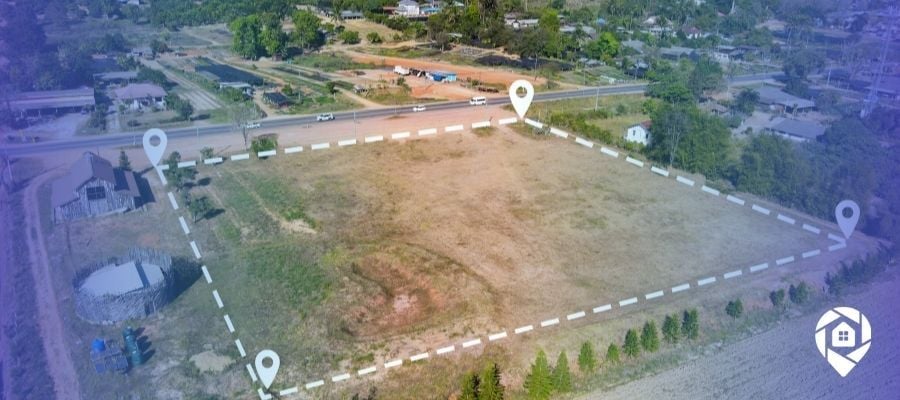
How to Best Manage P&Ls So You Can Scale
.png)
Although knowing how to find distressed properties is a great way to get leads and generate profits, you need to know more than that to scale your business. After all, there are only so many hours in a day, and if you want to grow your business multiple times over, you can’t expect to increase your workload multiple times over to achieve your desired growth. Other adjustments must be made that allow your business to scale.
This is where real estate profit and loss statements come into play. To scale, you need to know your starting point and have actual numbers for expenses and income. These figures will help you determine what actions must be taken to move the needle and generate higher profits.
Profit and loss statements give you the data you need to understand how certain actions affect your company’s bottom line. In this chapter of our guide, you’ll learn everything you need to know about P&Ls and how to use them to scale your business.
What is Profit & Loss in Real Estate?
Whether you flip homes or wholesales properties, your business earns income, or profit, and incurs expenses, or losses. Your profit and loss statement is the summation of both of these and provides you with a clear picture of business financials so you can make smart real estate investing decisions. Let’s review what a profit and loss statement consists of and how to use the information to your advantage.
Revenue
Your real estate profit and loss statement starts with the total sum of revenue your business brought in during the chosen time period. If you would like to see revenue details, there is usually a separate table showing detailed expenses.
Revenue for your real estate investing business comes from property sales.
Expenditure
Another line on a profit and loss statement for real estate investing companies is the expenditure line. This shows the total expenses incurred during the given period.
Expenses may vary depending on your business needs. Purchasing and repairing properties are examples of a couple of business expenses.
Gross Income
Gross income is determined by subtracting direct costs from revenue. Direct costs vary depending on the type of real estate investing business you own.
Real estate investors that hold rental properties will subtract direct costs that go toward maintaining and upkeep of their rental properties. Common expenses include repairs, lawn maintenance, or cleaning for new tenants. Direct costs also include insurance and advertising expenses to locate new tenants and other similar expenses. Wholesalers will include closing fees as a direct cost.
You can use this number and your revenue to determine your gross margin percentage, or your gross profit margin. To calculate gross profit margin, divide your gross income by your revenue and express the answer as a percentage.
The gross profit margin indicates the financial health of your business. The higher the margin, the better your business model is doing. Investors and lenders may use this number to evaluate how sound your business is financially.
Operating Expenses
Operating expenses include all the costs of running your business. For a real estate investment company, these may include:
- Office rent
- Payroll
- Driving for dollars DealFinder payments
- Insurance
- Office supplies
- Administrative expenses
- Utility expenses, including internet service and phone service
- Marketing and advertising
- Accounting or legal fees
Depreciation
Depreciation of held properties offers a tax benefit and is included on a real estate profit and loss statement.
Earnings Before Interest and Tax (EBIT)
You will usually find the line with your EBIT toward the end of your P&L statement. Business earnings before interest and tax are typically calculated by subtracting operating expenses from revenue.
Earnings Before Tax (EBT)
Another line in your profit and loss statement is the earnings before tax (EBT) line. The numbers used to calculate your EBT differ from those used to calculate the EBIT because depreciation is involved. EBT is calculated by subtracting operating expenses and depreciation from your total revenue.
Earnings Before Interest, Taxes, Depreciation, and Amortization (EBITDA)
A similar line on your P&L statement is the earnings before interest, taxes, depreciation, and amortization (EBITDA) calculation. This measurement helps when comparing your business to other real estate investment companies and a quick way to calculate it is by starting with your operating profit, or earnings before interest and tax (EBIT) and adding depreciation and amortization back into it.
Net Operating Income: Profit or Loss
The final line of your profit and loss statement is what everything leads up to, and it is the so-called “bottom line” that tells whether your business is profitable or not and by how much.
If the line shows a loss, your business spent more than it earned, and expenses either need to go down or income needs to go up. If the line shows a profit, your business was able to make more than it spent, and depending on how large your profit was, you will want to further evaluate expenses and income to generate a larger profit.
Types of Profit and Loss Statements
While it’s important to understand what a profit and loss statement is, it’s also good to note there are different types of profit and loss statements to serve different purposes. Here are a few of the most common P&Ls for real estate investing businesses.
1. Month-Over-Month
You’ll want to run a month-over-month profit and loss statement at the end of each month to gain important insight. The month-over-month profit and loss statement compares the income and expenses of one month to the income and expenses of the previous month.
This comparison helps you identify month-over-month trends for you to use that information to determine if changes need to be made for the month ahead.
If one of your team members closed more deals this month than the previous month after sending more direct mailers, it might be a good idea to do the same thing the next month rather than pulling back on your marketing spend. Small tweaks go a long way and analyzing your month-over-month P&L lets you keep a close watch on business.
2. Year-End
The year-end profit and loss statement is a general statement that shows the income and expenses of your business for the given calendar year.
This statement is used to prepare your business taxes and it can also be used to evaluate how your business did in the last year. Were all your goals met? Did you hit your target profits and expenses? What changes might need to be made to meet future goals? The end of the year is a good time to evaluate and assess what went right and what needs attention.
3. Year-to-Date (YTD)
A year-to-date (YTD) profit and loss statement runs from January 1 of the current year through the end of the previous month from which you’re pulling the data. This statement gives you a good view of overall income and expenses and how you’re trending for the year.
It’s important to generate this statement at least every quarter so you can make any necessary adjustments to ensure you are on track for your end-of-year goals.
4. Trailing 12-Month (T12)
The trailing 12-month statement is a P&L that runs from 12 months before the most recent month. As opposed to a year-to-date that starts on January 1, the trailing 12-month statement precedes that and shows you the business profits and losses from the previous year up to 12 months prior. If you generated this statement on July 15, you would see income and expenses from July 1 of the previous year through June 30 of the current year.
As you scale your real estate business and apply for additional financing or investment, this trailing 12-month statement gives lenders or investors a good overview of current business as well as information about seasonal business.
How to Use Profit and Loss Statements to Scale Your Business
Real estate profit and loss statements are a vital tool to help you scale your business. Growing your business is one thing and it can cause expenses and profits to increase at a similar rate. To scale your business, you need to increase your gross margin, and to do this, either revenue needs to go up or expenses need to go down.
Another important thing to note is that when you scale your business, it does not mean you work more hours to generate more business. Instead, you find ways to work less while generating a higher profit margin. Similarly, if you increase your expenses at the same rate as you increase your revenue, you’ll just be doing more work for the same profits.
Real estate investors should prepare profit and loss statements every month. The data they gain from these statements will ensure they plan, and goal set, realistically and with a firm grasp of how the business is doing. The following are a few ways profit and loss statements can help you scale your real estate investment company.
Use Real Estate Profit and Loss Statements to Set Goals
Profit and loss statements provide the information you need to map out your business goals. As you generate these statements, you collect valuable data that you should use for goal setting. Knowing the exact dollar amount of your profits helps you track and maintain realistic goals for future performance.
If your team did an average of 5 deals per month over the last six months and you recently grew your driving for dollars team. Set your goal for monthly deals appropriately above what you’ve previously attained. At the end of the year, the profit and loss statement will inform you of how much profit you have to reinvest in the business the following year.
Knowing how much your business spends on expenses is also helpful. Use actual expenses to project how different actions could affect profits such as if you increase your marketing spend on real estate mailers or hire additional team members. Set goals for how much more profit you expect to make when you spend more on new expenses.
Demonstrate Your Performance to Investors and Lenders
Any investors or lenders thinking about providing an investment or loan to your business will want to see your P&L statement to determine the risk involved. A highly profitable business will have an easier time generating the capital the business needs to grow. Profit and loss statements show your track record for success and are the snapshot needed to convince others you will use the additional capital wisely.
Generate Pro Forma Financial Statements
While you can use profit and loss statements to see what happened in the past, you can also use them to project future financials. Pro forma financial statements let you exclude data that you feel distorts the actual business financials. This might be a one-time expense or something that you don’t anticipate will occur again. Instead, you form a hypothetical financial statement that outlines what your projected business results will be. These are often used in investment proposals to show potential future earnings.
Efficiently Run Your Real Estate Business With DealMachine
Using a real estate profit and loss statement is just one way to help you scale your REI business. To ensure you and your team have all the tools you need to effectively run your growing business, you’ll want a powerful software stack that provides everything from batch skip tracing and ROI snapshots to lead management and driving for dollars in one app. DealMachine delivers everything you need to run your business efficiently and manage your team effectively. Start closing more deals today with your free trial!
.png)
About Elise Knaack
Elise is the Head of Marketing at DealMachine. She manages all media to help our members learn more about real estate investing and how to use DealMachine to scale their business fast.



